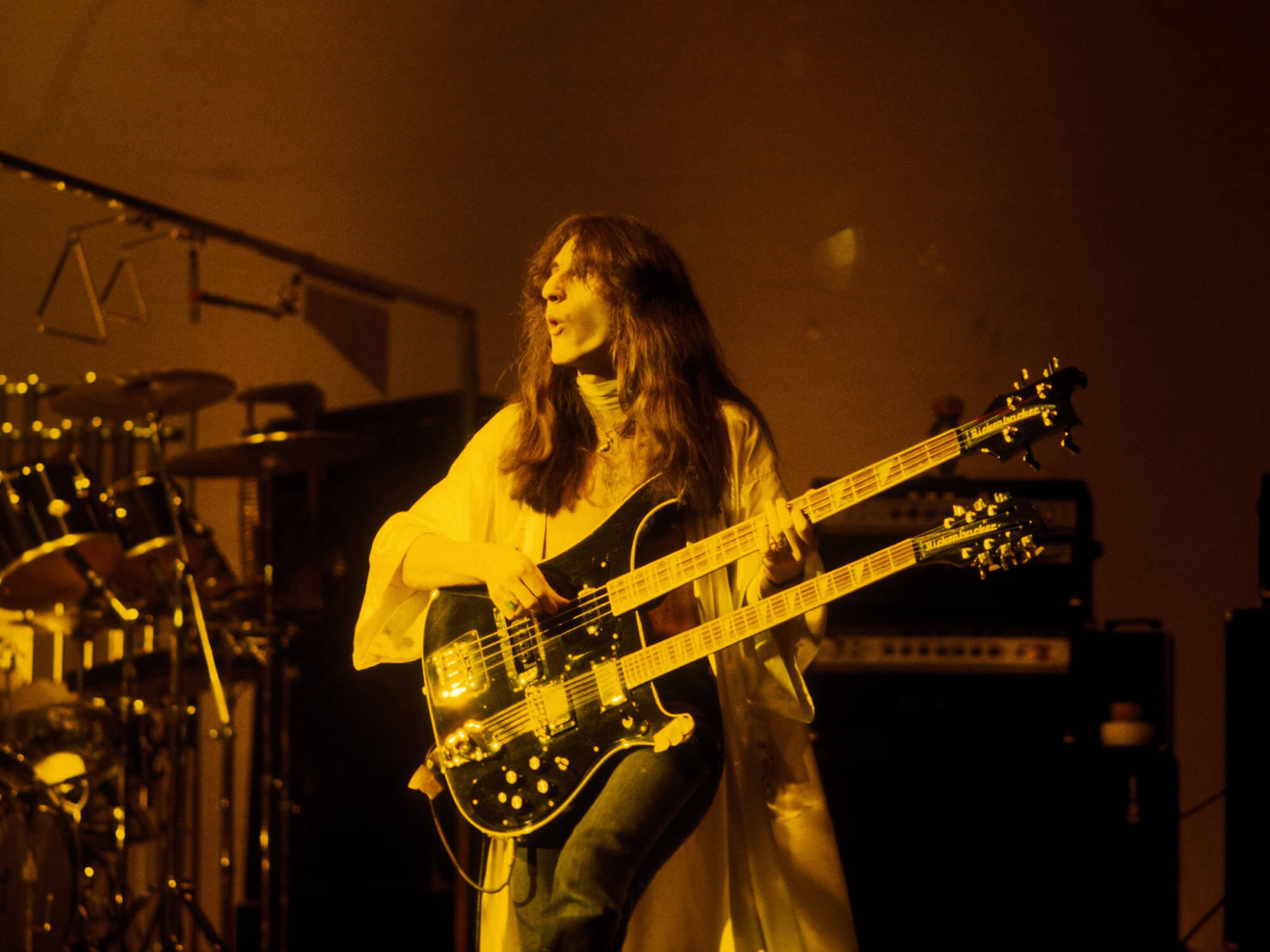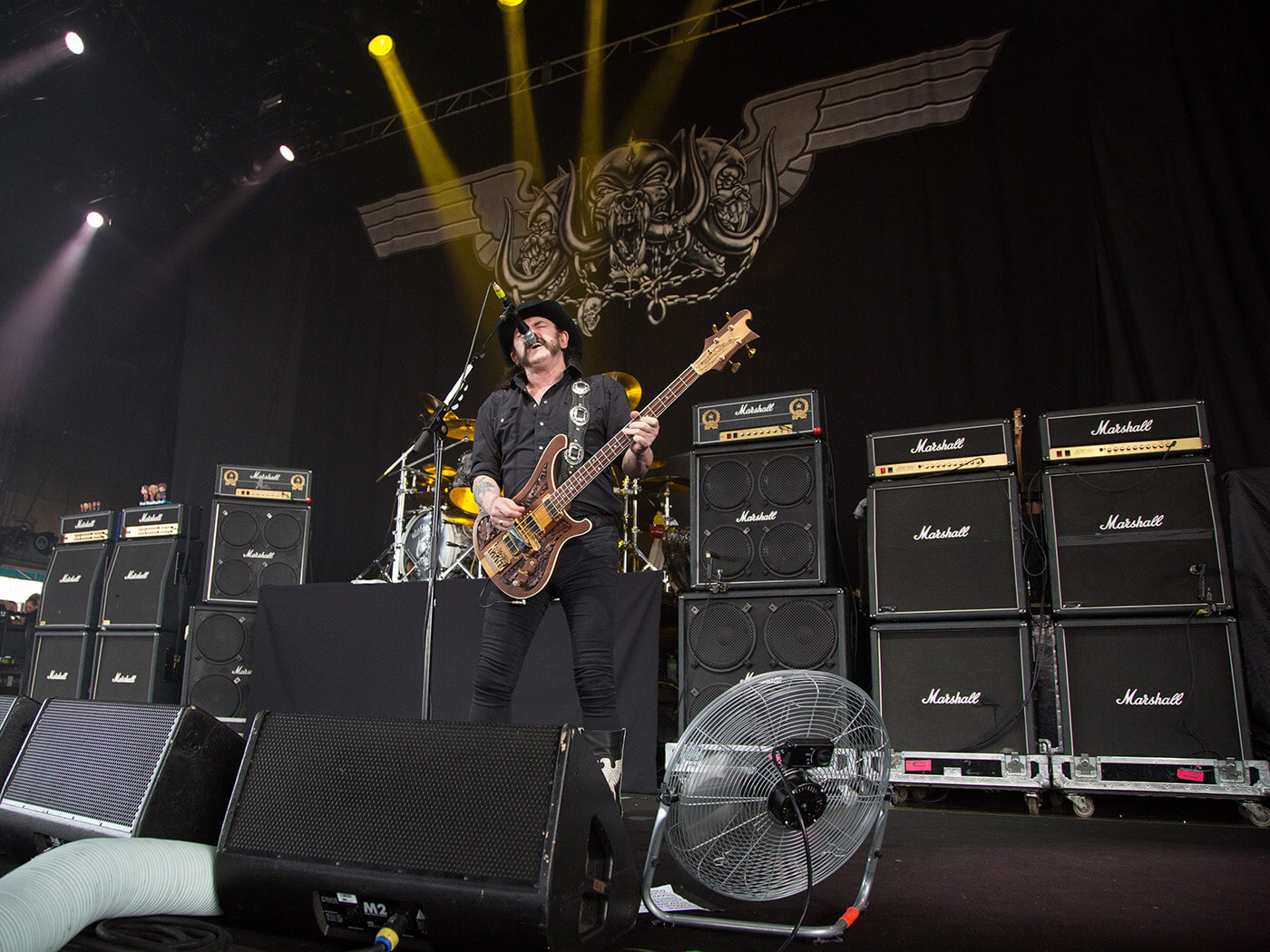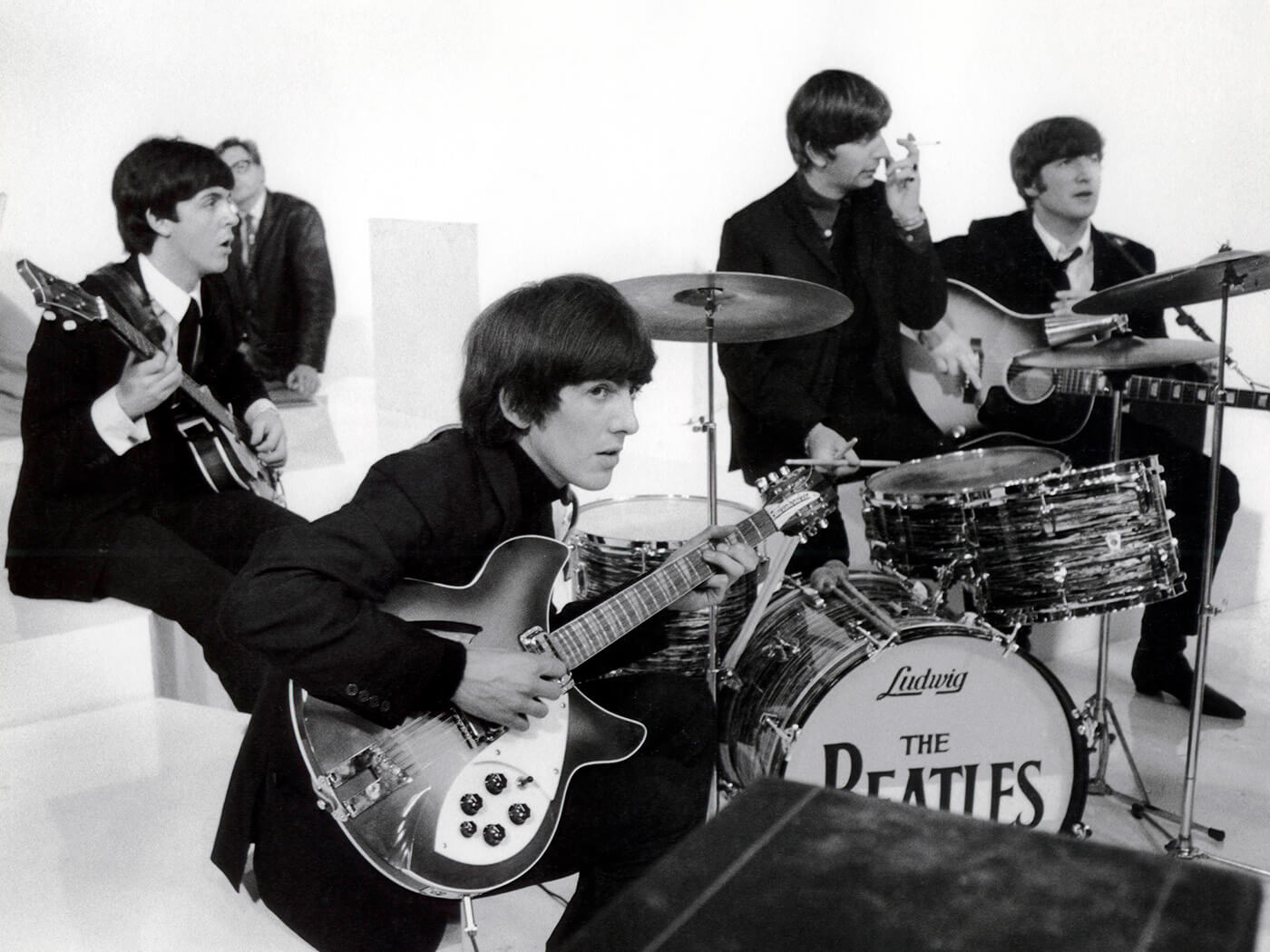Related Tags
The untold history of Rickenbacker
It’s one of the most recognizable guitar brands out there, but also one of the most mysterious – here’s the story.

Geddy Lee of Rush. Image: Ebet Roberts / Redferns
The Rickenbacker Instrument Company [as it would come to be known] was primarily founded by a group of guys who worked together at the National String Instrument Corporation in 1931 – this group included George Beauchamp, Paul Barth, and Adolph Rickenbacker. Originally the company was called Ro-Pat-In Corporation [Electro-Patent-Instruments] and their business model was centered on capitalizing on the fad of Hawaiian music that was popular at the time by making lap steel guitars used for that style of music.
Beauchamp had previously built steel guitars when he co-founded and worked at National. In fact, he helped design the Dobro Resonator Guitar, which aimed to make the acoustic guitar louder.
Rickenbacker himself was a Swiss born electrical engineer who moved to America. At National, he helped the brand streamline production as he owned the machines that manufactured the aluminum resonators and brass bodies for National’s instruments, including the Dobro.

When The Great Depression hit the US in 1929, management at National was unwilling to branch out and try anything new. So in 1931, Beauchamp, Paul Barth, Rickenbacker and several other individuals banded together and splintered off to form Ro-Pat-In. Their earlies guitars were branded as “Electro” but soon after they changed the name to Rickenbacker. The work they would do together would inadvertently change the musical landscape forever.
The first industry shattering invention came when Beauchamp and fellow National engineer Paul Barth designed the first electric magnetic pickup – commonly referred to as the “horseshoe pickup”. In 1931, a prototype for the new electric lap steel was created that has become widely known since as the “frying pan” although Beauchamp preferred to call it the “pancake”. Beauchamp and Rickenbacker began selling the lap steel in 1932, but it was not awarded a patent until 1937, which allowed several other builders to copy the idea and produce their own variants of the electric guitar in those years.
The Frying Pan featured a solid aluminum body and neck and Beauchamp’s horseshoe pickup. The Frying Pan was manufactured well into the 1950s although the construction would change from an all-aluminum build to a Bakelite construction. It was made available in 22.5″ and 25″ scale lengths and can be heard on many Jackson Browne recordings [played by David Lindley in the 1970s].

Rickenbacker finally started making standard [Spanish-style] guitars in the mid-1930s. The first model was dubbed the Ken Roberts Model [after Beauchamp’s musician friend]. They would go on to create archtops as well as a model constructed of Bakelite, which would become a precursor to those who would later create guitars out of alternative materials.
Beauchamp tragically passed away in 1941 before he was ever able to witness how the electric guitar would change the music industry forever. His funeral procession was said to have been over two miles long, and he should never be left out of the conversation when we talk about innovators of the electric guitar.
While we typically think of Rickenbacker as a guitar company, back in the budding years of the company, when they were still called Electro String, they also sold amplifiers to go with their guitars. During the early 1940s, Rickenbacker amps were sometimes repaired by another southern California guitar legend, Leo Fender, whose repair shop evolved into the industry juggernaut, Fender Electric Instrument Manufacturing Company.
The company continued to build electric guitars, but they still specialised in steel guitars until 1953 when Adolf Rickenbacker sold the company to FC Hall who was no stranger to the guitar industry – he owned Radio-Tel at the time, and also distributed guitars for Leo Fender. Under Hall’s tutelage, the company started to shift its focus to the standard electric guitar market. By 1956, Hall had introduced two instruments featuring a neck-through body construction. They were one of the first manufacturers to use this style of construction in a solid body guitar design [you may recall that Les Paul’s Log design was also a neck-through].

Hall employed some great designers like the legendary luthier Roger Rossmeisl who was responsible for the Capri models which emerged out of the late 50s. He was also responsible for the 4000 series basses that became very well known. Later on, he was responsible for Fender models such as the Telecaster Thinline and the Coronado.
One can never underestimate the power of a high-profile artist using your products. That’s exactly what happened in the budding years of a band called The Beatles. After fans saw the Fab Four playing Rickenbackers such as the Model 325, a Model 4001S, and a Model 360, sales skyrocketed all around the globe. Prior to The Beatles, all Rickenbacker guitars had been made at the original Electro String factory in Los Angeles. But in the wake of Beatlemania, demand had exploded, and Hall had to move to a larger factory in Santa Ana in 1964. By the mid-60s there was a six-month waiting list to get a Rickenbacker.
The 60s were a time for experimentation and in spite of the massive demand for existing Rickenbacker models, the brand continued to keep the innovative juices flowing, coming up with a multitude of unique novelty models like a ‘bantar’ – a banjo/guitar hybrid.

Innovation continued into the early 70s when Rickenbacker introduced a guitar with slanted frets. The theory there was that the slanted frets would feel more natural for the player’s fretting hand. The same theory is a major selling point on modern fanned fret guitars.
The brand even continued to take on custom orders which spawned a few 8-string bass guitars. Perhaps strangest of all was called the Model 331 which featured a frequency-modulated kaleidoscope that would light up the guitar’s body when the player would hit the strings. This trippy model is often referred to by collectors as “The Light Show Guitar”.
Rickenbacker was a trailblazing company that became a mainstay in the world of electric guitars although they did occasionally dip their toes into the acoustic market as far back as the 1950s. They still occasionally do a run of acoustics. But the company will forever be known for the legacy of innovation they brought to the world of electric guitar and bass instruments.
Unlike companies like Gibson or Fender, Rickenbacker is still a family-owned business – the current CEO is John Hall who purchased the company from his father FC Hall. While the company periodically introduces new models, it’s an example of a brand that primarily sticks to what it knows – making the same high-quality instruments that the brand has been famous for for over five decades, in the same factory in Santa Ana, California.
The company has kept their integrity intact when other brands shipped production overseas, Rickenbacker continues to churn out high quality instruments in Santa Ana, California, USA.
For more features, click here.
